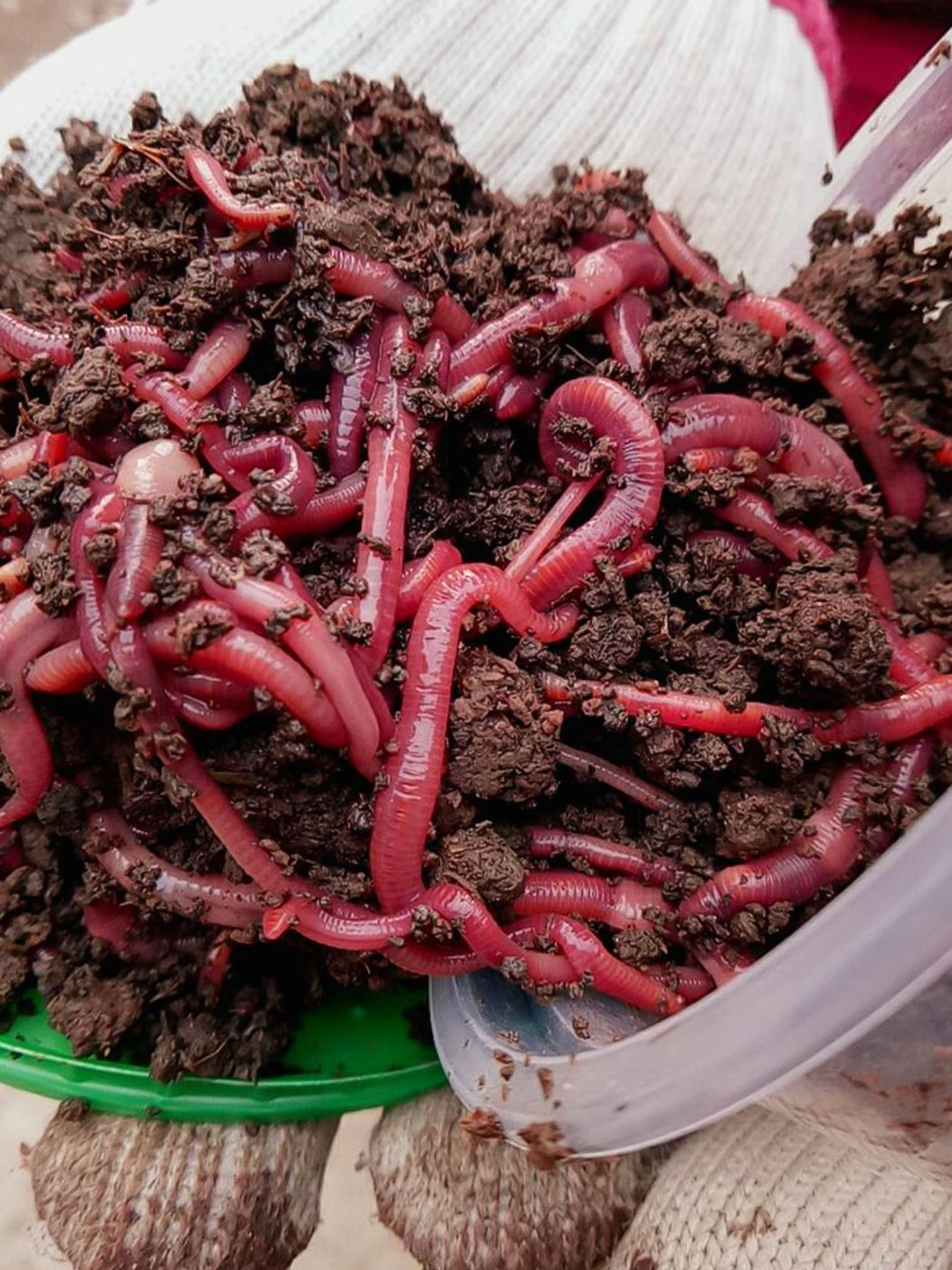Unlock the Keys of Red Wigglers: Your Overview to Composting Success
The integration of red wigglers right into composting techniques offers a considerable chance for improving soil wellness and advertising sustainability. Recognizing their demands and behaviors is crucial for maximizing their capacity, from setting up an ideal worm container to feeding them the appropriate products.

What Are Red Wigglers?
(Red Wiggler Express)Red wigglers, medically referred to as Eisenia fetida, are a species of earthworm mostly made use of in composting due to their amazing capacity to disintegrate organic matter efficiently. These worms are characterized by their reddish-brown coloration and a fractional body, typically gauging in between 3 to 4 inches in size. Unlike other earthworm species, red wigglers flourish in rich, natural atmospheres, making them suitable for vermicomposting systems.
Native to The United States And copyright, they are usually found in decomposing leaves and compost heap, where they play a crucial duty in nutrient recycling. Their adaptation to living in a damp, cardio setting allows them to consume big amounts of organic waste, damaging it down right into nutrient-rich spreadings that enhance soil health and wellness.
Red wigglers duplicate rapidly, with a solitary worm capable of producing several cocoons each week, each having several hatchlings. This rapid recreation price adds to their performance in composting procedures. They favor temperatures between 60 ° F and 80 ° F, and their activity degree increases substantially within this range, further aiding in the disintegration process. Recognizing the biology and habits of red wigglers is necessary for optimizing their potential in composting applications.
Advantages of Making Use Of Red Wigglers
Using the power of red wigglers in composting provides many advantages that boost soil health and wellness and advertise lasting waste monitoring. These impressive organisms successfully break down raw material, transforming kitchen area scraps and backyard waste into nutrient-rich vermicompost. This ended up product is remarkably useful for plant growth, as it improves soil framework, increases wetness retention, and boosts nutrient schedule.

(Red Wiggler Express)Furthermore, the presence of red wigglers in your composting system can increase the composting process, creating high-grade garden compost in a fraction of the time contrasted to traditional approaches. The spreadings created by these worms are likewise including advantageous microbes that better improve the soil environment.
Setting Up Your Worm Bin
Developing an effective worm container is an uncomplicated procedure that can substantially enhance your composting efforts. Worm containers can be made from plastic storage space containers, wooden boxes, or commercially readily available worm containers.
Following, prepare the bed linen product, which serves as the worms' habitat. A mix of shredded paper, cardboard, and coconut coir works well, giving a comfortable setting for the worms.

Feeding Your Red Wigglers
To ensure the health and wellness and efficiency of your red wigglers, it is vital to offer them with a balanced diet plan that satisfies their nutritional needs. Red wigglers flourish on a diverse selection of natural products, which not only provide needed nutrients yet also advertise efficient composting.
Beginning by incorporating kitchen scraps such as veggie peels, fruit cores, and coffee grounds. Stay clear of citrus fruits, onions, and garlic, as these can be destructive to worm health. Additionally, present shredded paper, cardboard, and dry leaves to develop a well-aerated atmosphere.
Feeding frequency must be checked; normally, worms can eat half their body weight in food weekly. It is crucial to avoid overfeeding, as excess food can result in unpleasant odors and bring in pests. A good method is to add food in little quantities, allowing worms to process it prior to presenting a lot more.
Maintaining dampness levels is additionally crucial; the bedding needs to perspire yet not soaked. Finally, be sure to consistently inspect the temperature and pH levels of the bin to ensure an optimal setting for your red wigglers, ultimately improving their composting efficiency.
Harvesting and Utilizing Compost
An effective composting process with red wigglers finishes in the rich, dark compost referred to as vermicompost, which can significantly enhance soil health and plant development. Collecting this nutrient-dense material typically takes place every three to 6 months, depending on the dimension of your system and the quantity of raw material being refined.
To collect, delicately separate the garden compost from the worms and any type of undecomposed materials. One effective method entails moving the components of the bin away and adding fresh bed linen and food to the void, motivating the worms to migrate. After a few days, the compost can image source be collected from the contrary side.
It is important to utilize vermicompost properly to optimize its advantages. By including vermicompost into your gardening routine, you not only recycle organic waste yet additionally create a successful ecological community that supports sustainable gardening practices.
Verdict
In recap, red wigglers serve as extraordinary allies in composting initiatives, changing organic waste right into nutrient-rich vermicompost. By understanding the ideal problems for their habitat, feeding requirements, and garden compost harvesting strategies, gardeners can boost soil health and promote plant vitality.